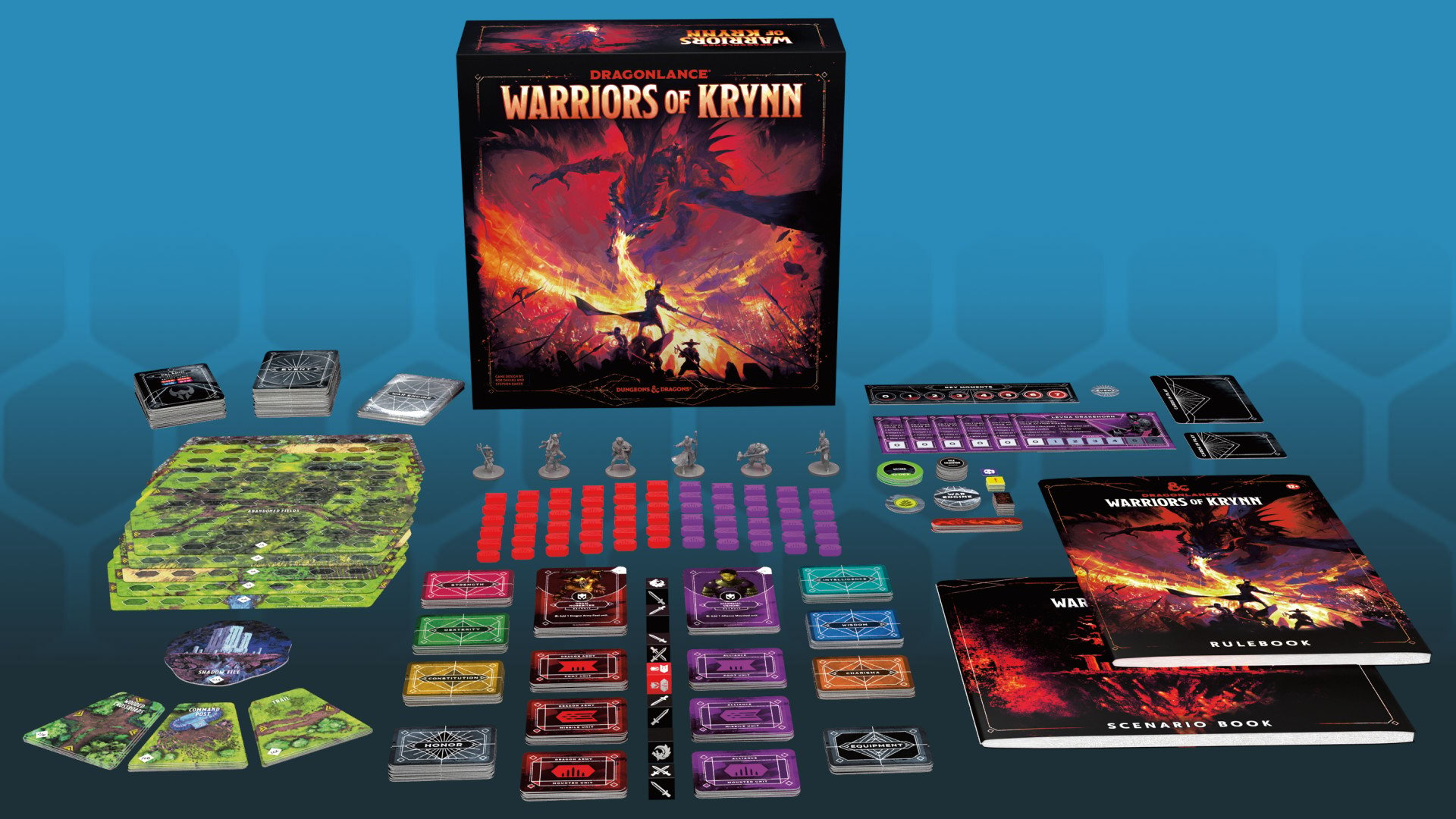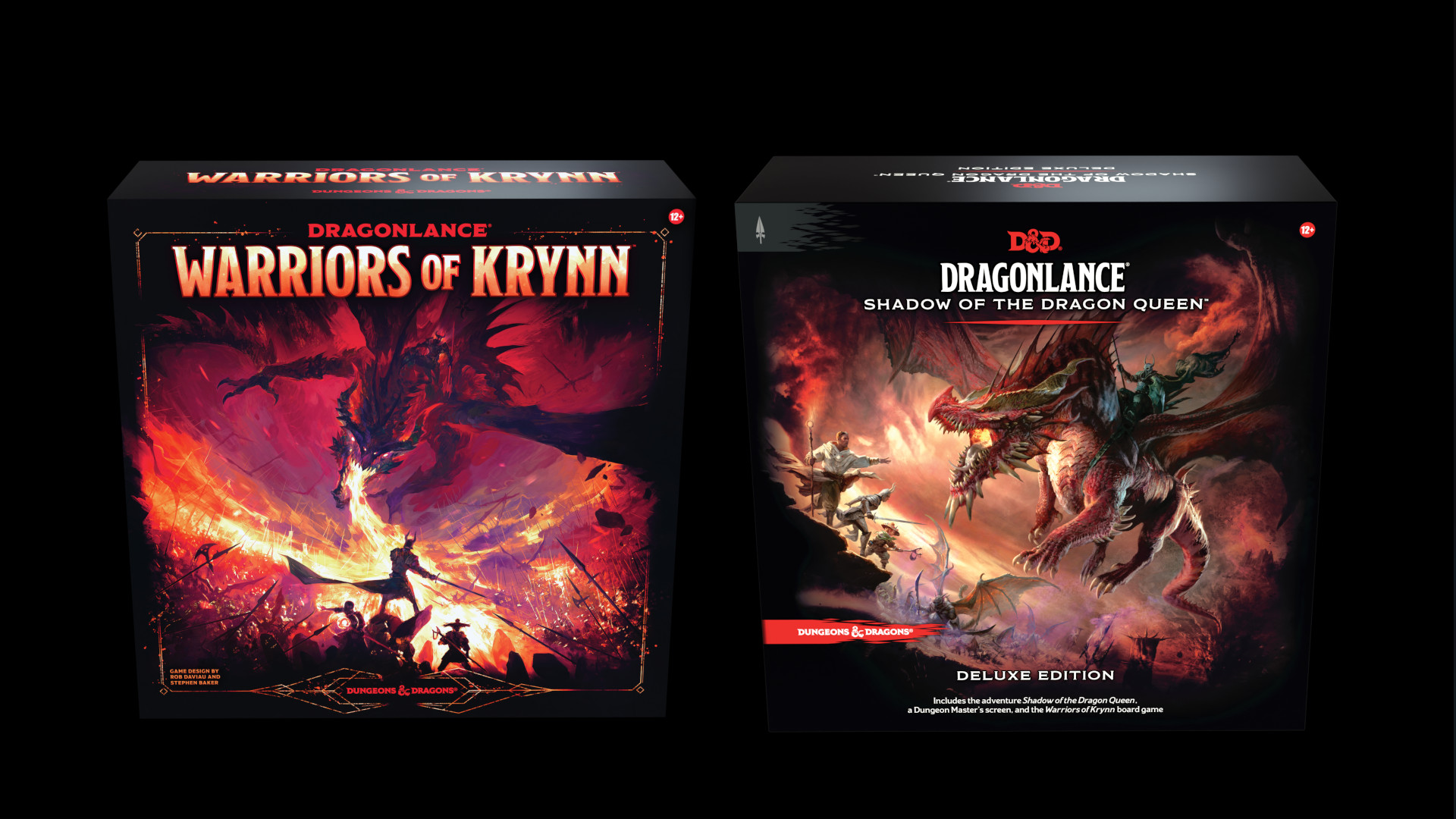When it was first announced in May, the Dragonlance: Warriors of Krynn board game was touted as a new way to play DnD. A Wizards of the Coast press event on October 27 now tells us exactly what that means. Warriors of Krynn is a campaign-based game that stages large-scale battles through 12 scenarios. You can play it standalone, or it can tie into your Dragonlance RPG campaign.
The easiest way to fully grasp what Warriors of Krynn is seems to be to talk about what it isn’t. The game’s designer, Rob Daviau, is best known for turning games like Pandemic and Betrayal at House on the Hill into legacy board games, but he makes it clear in the press briefing that this is a “campaign” game with legacy elements.
“You’ll get a reputation and a medal if you win”, says Daviau. “You can use those to help you in future scenarios.” He explains the only other legacy element is the game’s tiers. “There are three tiers of play – recruit, veteran and legendary – and the veteran and legacy cards, powers, and commanders are sequestered at the beginning in their own shrink-wrap packs. You don’t open them until you’re ready for them.”
Warriors of Krynn also isn’t a tabletop RPG, but it has roleplaying elements and is designed to complement the Dragonlance 5e campaign, Shadow of the Dragon Queen. The board game functions as a standalone experience, but its key plot moments tie in with the RPG adventure and can be used to stage mass combat scenarios during an RPG session.
Like in a normal game of D&D, players take on one of 12 DnD classes in Warriors of Krynn. Each gets a handful of powers and cards that let them influence the battlefield. As characters advance in the RPG, they advance in the board game as well. A level zero scenario provides a sandbox to find your feet in, then there are four low-level scenarios, followed by four middle and four high-level ones. The idea is to record whether you win or lose a battle scenario, then move on to the next in the story.
“What we saw in playtesting is people know DnD”, Daviau adds. “They’d immediately start roleplaying”. The example he gives is when interacting with commanders – these start the scenario ‘shaken’ and unable to use their special abilities, and players must use their actions to ready them. This is prime for some persuasive (or perhaps shouty) roleplay, it seems.
Something else Daviau says Warriors of Krynn isn’t is “a traditional war game”. “You are not commanding the units – the battle is bigger than you”, he explains. “You are a component, and you can put your finger on the scale, but at lower levels you can only influence.” “The battle is happening around you, and your job as heroes is doing a special mission.” The press briefing showed off an early scenario that has the players evacuating civilians (which ties into the book’s first chapter preview).
When players begin a Warriors of Krynn scenario, a huge battle is already underway. Large battle tiles are set up with rows of ally and enemy units, and smaller adventure tiles make up the “connective tissue between battlefields” where players can perform helpful actions. Players must manage an increasing number of battle tiles and flanks, one of which is always active. “We’re doing a very cinematic thing,” Daviau adds.
Everyone gets four actions per turn. Event cards are flipped to let you know what to expect next, and then you can move or spend a certain amount of actions on activities like using commander abilities and calling for reinforcements. At the end of every turn, the two armies battle. Instead of rolling d20s, results are determined with D6s instead.
“You win combat by having more units in a line than your enemies”, Daviau explains. Units that take one hit are shaken (and if an entire row of them becomes shaken, they’ll flee). Take two damage, and a unit is destroyed. “It’s very hard to get units back in this game”, Daviau adds.
Despite not being in command, Daviau says the player-characters are very important for combat outcomes. “Alliance armies are almost always outnumbered, and if it weren’t for the player characters, they would lose”, he explains.
Warriors of Krynn is designed for three to five players, but it can be fairly flexible with that number. There are five characters to use on the board, but the number of people controlling them is up to you. Daviau points out the DM of a Dragonlance campaign can pick up any character not being used to join in the board game. However, if there isn’t space, the DM will have to add some narration over the scenario’s events – or sit the board game out entirely. No one is needed to play the enemy armies, but a DM could also spend time flipping cards, rolling dice, and doing voices for foes.
For more upcoming releases, keep an eye on the DnD 2023 release schedule. We also have a guide to our favourite DnD board games you can play right now.



